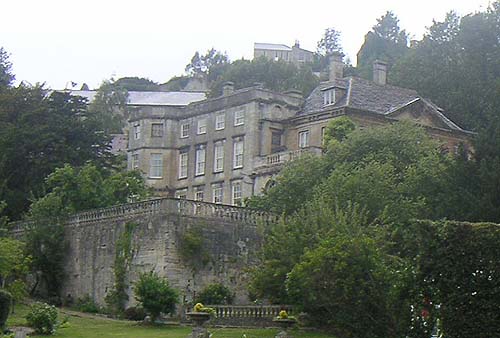The
Chantry House
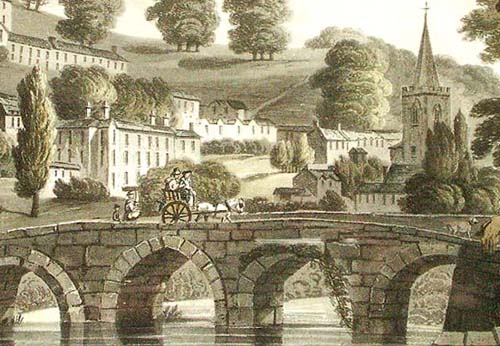
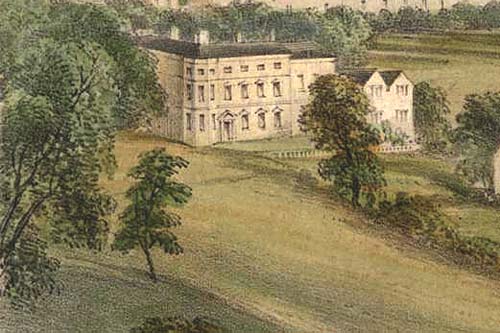
The
Chantry House painted by Elizabeth Tackle in 1850
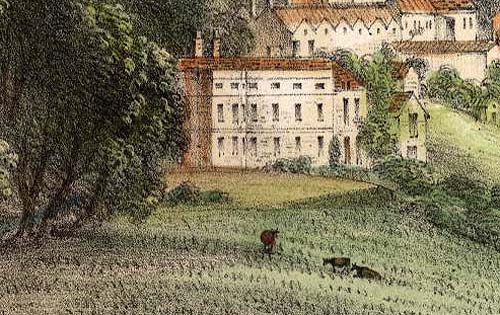
The
Chantry House painted by Elizabeth Tackle in 1850

The
Chantry House.- an Abstact from Rev. Jones History of Bradford on Avon
There
was, in 1546-48, a house known as " the Mantyon Bouse of the Chauntre",
and occupied by the Priest at a yearly rent of 3s. 4d. This must have been the
nucleus of the present house, and included, in its southern wing, the small priest's
room or place of concealment, and the curious fish tank, or bath, below it.
The
following history of the tenure I owe to the kindess of Sir C. P. Hobhouse, Bart.
30th
Decr., 1578, Cyrell Hall, of Barton, Bradford, tuoadener (? dyer) and Anthony
Webbe, also of Barton, conveyed the messuage and garden, called the Chauntiry
House to James, Thomas and Mary, the children of Richard Willis of Wynnesley.
Consideration £12 of currante money of England. In 1580 Edward Horton, of
Westwood, gentleman, (whose father Thomas of Iford had purchased the Chantry property
from the crown a the dissolution) had let ("farm letten ") the premises
to Robert Fuller, of Bradford, for a consideration of 14/-. In 1595 and 1614 there
were certain money transactions between Thomas and Anthony Lobell, yeoman and
clothier, of Bristol, and John Baillie ; and one of these Lobells on December
1, 1623, conveyed the premises to Robert Daunton alias Bailie, of Bradford, husbandman,
for a consideration of £44.
On January 1, 1650, Thomas Bailey alias Daunton,
of Bradford, gentleman, and Charles Bayley alias Daunton, of Attwell, Wilts, clothier,
conveyed the premises to Robert Holton, of Bradford, clothier, for a consideration
of £65; and in 1662 Elizabeth Taunton or Daunton alias Bayley, of Leigh,
Bradford conveyed the premises to Robert Holton, of Trowbridge, clothier, in consideration
of the sum of 10 shillings and divers other considerations.
Up to this time
the conveyances talk simply of a messuage and garden, and make no mention of any
rights superior to those of the successive leaseholders (though the existence
of such rights might perhaps be conjectured from the smallness of the prices.)
But in the year 1664 appears the fact that the premises were within the Manor
of Bradford and Rowldy, that the main lease wot apparently from the Lord of the
Manor (? Walsingham) and that the full term of it was 2000 years.
On the 30th
November, 1664, Sir Edward Hungerford, of Farley Hungerford, conveyed the premises
for the sum of £399 : 3 ; 6 to certain Trustees, in trust for Edward Thresher,
clothier, of Bradford, for the residue of this term of 2000 year*. But on July
4,1672, Lady Hungerford, of Corsham, Wilts, and of Farleigh Hungerford, Somerset,
in consideration of £66 in money, and of a yearly payment of 4 shillings
and a fatted capon to be Tendered yearly on or before Christmas Day, demised the
premises to John Holton, of Bradford, clothier.
Nevertheless, in 1676, the
same John Holton paid one Robert Ifoot a sum of £303 for the said premises.
Then in May, 1698, John Holton, of Nonsuch, Bromham, Wilts, and his sisters Margaret
and Jane, children of John Holton, late of Bradford, clothier, conveyed the tenancy
of the above premises to Edward Thresher, tenant thereof, for £260, the
tenants immediately preceding having been Thomas Pool and Charles Baillie, otherwise
Dainton or Daunton, of Keevil, Wilts, clothier.
So up to 1664-72 the Hungerfords
were the owners of the 2000 years' tenure. From the year 1664 Edward Thresher
held some kind of ownership, but not until 1696 was he both owner occupier. The
complexity of the tenures is quite feudal and the vicissitudes of the local families
concerned are noteworthy.
Additions seem to have been made to the house in
the later part of the 17th century, and again, by the Threshers, in the early
part of the 18th, when the small courtyard was covered in.
On the death of
Samuel Cam in 1792, it passed to Benjamin Hobhouse, who had married Cam`s daughter,
Charlotte. In 1794, he let the house to John Yerbury, clothier. Sir John Cam Hobhouse
Byron's friend, afterwards Lord Broughton, was born here The property was later
on sold to the Rev. P. Thring, and by him to Dr. Beddoe.
By 1807 an Ebenezer
Brown had built a Mill with workshops in the grounds. He was succeeded at the
Chantry factory by the firm of Samuel Mundy and Co. who were employing 81 hands
in 1816. The business surveved unitl 1836 when samuel Mudy when bankrupt. It probably
stood in the garden west of the house, where a stream still runs, although underground.
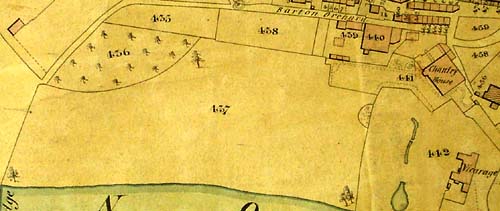
Map
of Chantry grounds in 1837
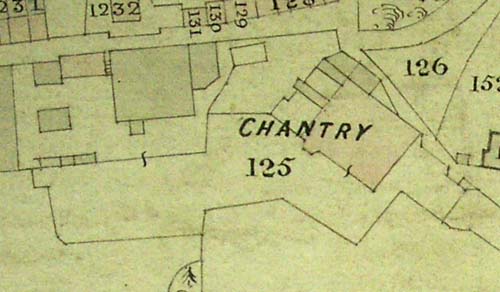
Map
of Chantry grounds in 1864
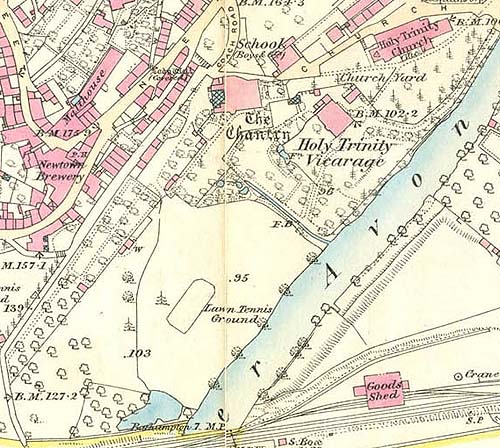
Map
of Chantry grounds in 1886
